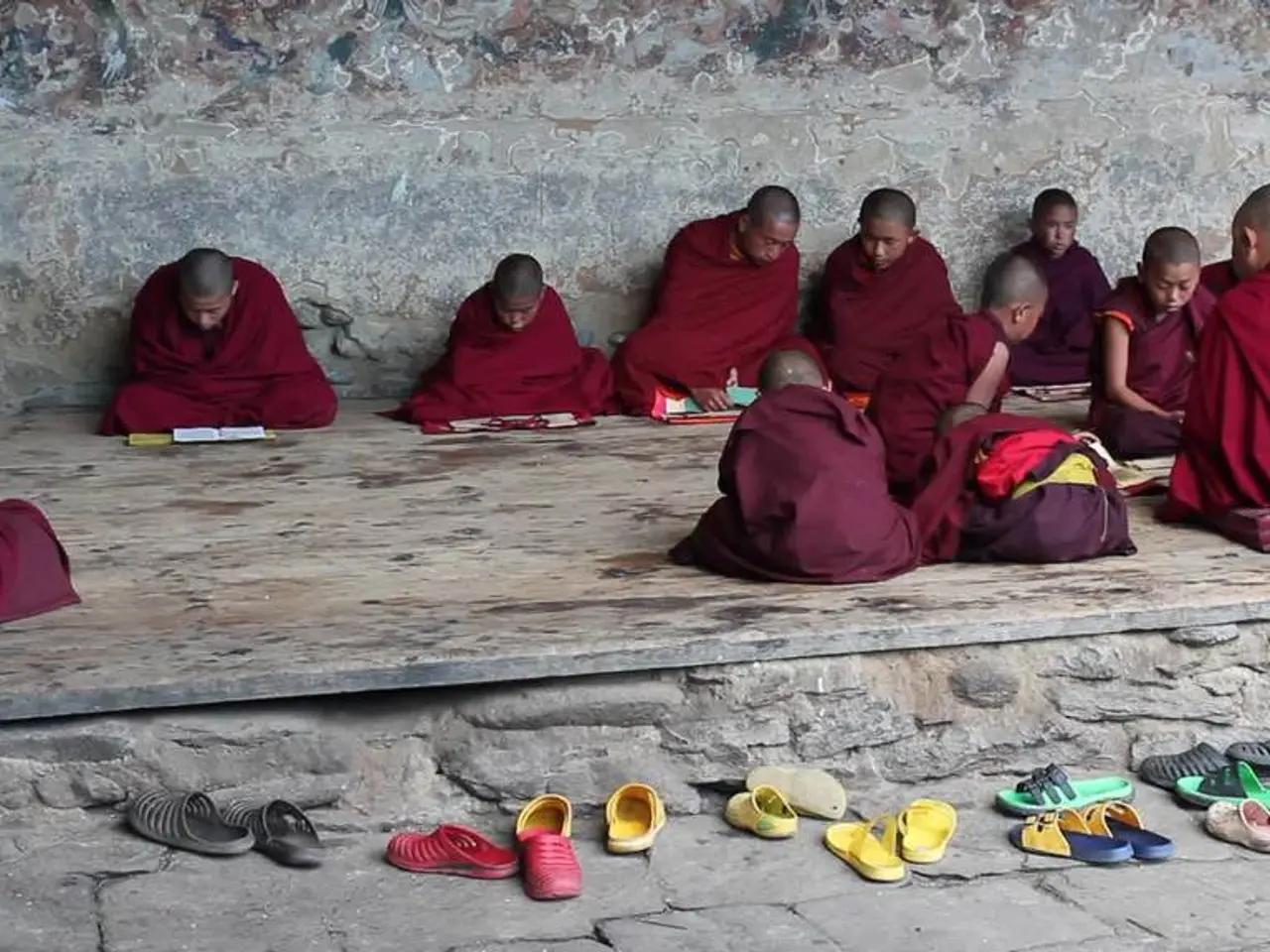Youngsters Wander Curiously through the Monastery's Realm
The Maulbronn Monastery, a UNESCO World Heritage Site renowned for its exceptional preservation of medieval monastic life and architecture, now offers a unique and engaging experience for young visitors through its children's museum.
The children's museum at Maulbronn is designed to bring to life the daily routines, crafts, and spiritual practices of the monks who lived there. Through hands-on exhibits, educational activities, and immersive spaces, children can explore how a medieval monastery functioned as a community.
One of the museum's highlights is its focus on the monastery's ingenious water management system, which was crucial for the monastery’s self-sufficiency. The system supplied water for drinking, cooking, sanitation, irrigation, and powering mills, demonstrating the advanced engineering skills of the Cistercian monks who built the monastery.
Visitors can also delve into the monks' daily life, which revolved around a strict schedule of prayer, work, and study. The museum illustrates this lifestyle through reconstructed spaces and artifacts, showcasing the role of the monks in agriculture and craftwork, the importance of religious observance and communal meals, and the use of architectural spaces like the cloister, chapter house, refectory, and dormitories.
In addition to the children's museum, the Maulbronn Monastery offers various other attractions. For instance, the inner courtyard is surrounded by towers and a defensive wall about one kilometer long. There is also a "construction site" where visitors can build a self-supporting round arch using a trowel and small building blocks.
The monastic school at Maulbronn has a storied history, educating notable figures in culture and science, such as Johannes Kepler and Hermann Hesse. The site also features a writing room (scriptorium) where visitors can try out medieval letters using stencils.
For a fun and educational twist, there are games like "Who Knows, Will Be Blessed", which tests knowledge about the monastery and its history, and "Monk, Don't Get Angry", which educates visitors about daily life in the monastery, including tasks like sheep shearing and gardening.
The Maulbronn Monastery is a historical site that illustrates details of the Cistercian order from the 12th to the 16th century. Its Romanesque and Gothic window arches can be decorated with colorful puzzle pieces, offering a creative way to engage with the monastery's history.
In conclusion, the children's museum at Maulbronn Monastery provides a unique, immersive way to learn about medieval monastic life, highlighting the monastery’s sophisticated water system and the daily rhythms of the monks, all within the remarkable historical setting of this UNESCO World Heritage Site.
In the children's museum at Maulbronn Monastery, visitors can also immerse themselves in the education-and-self-development sector, as they get a glimpse of the monks' academic pursuits in the monastic school, with notable figures like Johannes Kepler and Hermann Hesse being former students. Furthermore, home-and-garden enthusiasts may appreciate the creative activity of decorating the Romanesque and Gothic window arches with colorful puzzle pieces, much like a home-and-garden craft project.




